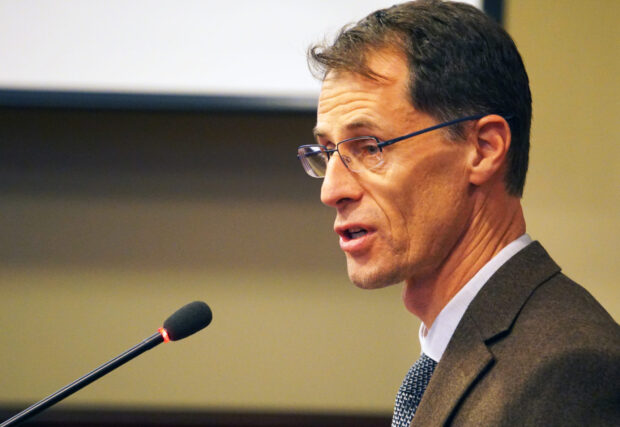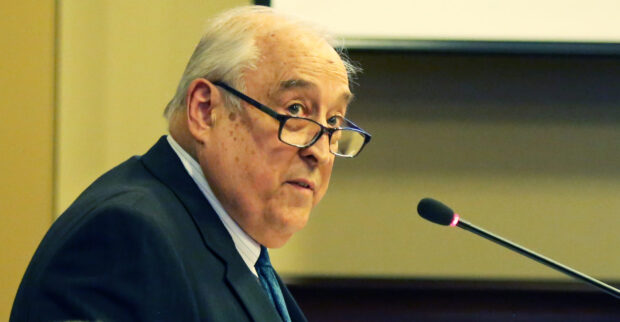Using an infusion of one-time taxpayer money, the state provided an additional 2,300 college scholarships this year.

Now, it’s “imperative” that the Legislature fully and permanently fund the scholarship, State Board of Education Executive Director Matt Freeman said Wednesday.
“The Opportunity Scholarship is a make or break for many of our students,” Freeman told the Joint Finance-Appropriations Committee. “If they don’t receive that scholarship, they don’t go on, or they may delay it.”
JFAC, the Legislature’s budget-writing committee, has a $7 million scholarship decision on its hands. A year ago, the Legislature added this $7 million into the scholarship pool, dipping into a reserve fund to do it on a one-shot basis.
Gov. Brad Little wants to make this $7 million line item permanent, providing more than $20 million for students attending two- or four-year schools in Idaho.
Freeman provided lawmakers with some updated numbers on this year’s program. Idaho awarded more than 6,800 Opportunity Scholarships this year — more than 4,000 scholarships for new students, and more than 2,750 scholarships for students continuing their education.
That doesn’t completely fill the need, however. The state received applications from more than 8,000 eligible students, leaving some 1,200 students out of a share of the money.
Distributed based both on student need and merit, the scholarship is worth up to $3,500 a year. On average, recipients receive about $3,200 a year.
Lawmakers had a long list of questions.
Rep. Wendy Horman, R-Idaho Falls, wondered if the state-funded scholarships improve college graduation rates. The State Board is working on a new round of numbers, Freeman said, but in past years, the board has found the scholarship has a statistically significant effect on graduation rates.
Rep. Caroline Nilsson Troy, R-Genesee, worried that higher education budget cuts would ultimately hurt scholarship recipients, since they would miss out on the support programs that help students graduates. Little has ordered two rounds of cuts — 1 percent this year, 2 percent next year. — which will force universities to make some difficult decisions while protecting student services, Freeman said. “Institutions exist for the students,” he said.
Rep. Neil Anderson, R-Blackfoot, wondered if the scholarships will increase college enrollment. “Are we just making it easier for kids to go on to college who would have gone anyway?” he asked. Scholarships should boost enrollment, Freeman said, but other factors affect student numbers. During an economic boom, for example, more high school graduates decide to work instead of enrolling in college.
CWI braces for another enrollment surge
The College of Western Idaho already serves more than 30,000 students — from high school students taking dual-credit classes to full- and part-time students pursuing an associate’s degree.

But CWI President Bert Glandon painted a picture of an even larger community college — one that someday serves 65,000 to 70,000 students.
During his JFAC presentation Wednesday, Glandon used some straightforward math to lay out his growth scenario. Community colleges in Seattle, Portland, Ore., and Spokane, Wash., serve about 6 to 7 percent of their market. Despite a decade of rapid growth, CWI is still serving only about 3 percent of its potential market.
“That makes people very nervous,” Glandon said. “We’d better figure out how we’re going to deliver differently.”
Glandon’s long-range forecasts took at least one lawmaker aback.
“For the first time in JFAC, my gut is tightened,” said Rep. Melissa Wintrow, D-Boise.
CWI’s enrollment won’t double overnight. But numbers should surge in the near future, partly because of a new Amazon distribution center, now under construction near CWI’s Nampa campus.
The Amazon center will pay employees $15 to $17 an hour, Glandon said, and the online retail behemoth’s benefits package covers tuition.
Last spring, the president of CWI’s faculty Senate delivered a letter to college trustees, expressing no confidence in Glandon’s leadership. Glandon didn’t address the issue directly, but said the school’s growth trajectory can affect employee morale. But he said the college needs to address its challenges directly — including the challenges of growth — before they reach the crisis stage.
Employee retention poses another challenge. CWI’s staff salaries lag about 16 percent behind market averages in the Treasure Valley, and Amazon and other companies will vie for available workers, Glandon said.
JFAC heard budget presentations Wednesday from all four community colleges: CWI, North Idaho College, the College of Southern Idaho and the College of Eastern Idaho.
Community colleges receive money from state taxpayers, local property taxes and student tuition and fees. The colleges’ share of state funding could be virtually flat next year. Little has proposed splitting $48.2 million in state general fund dollars among the four colleges, a 0.9 percent increase.
The four community colleges are also subject to the state budget cuts Little ordered last fall. All told, these total about $478,000 this year, and $955,000 next year.
